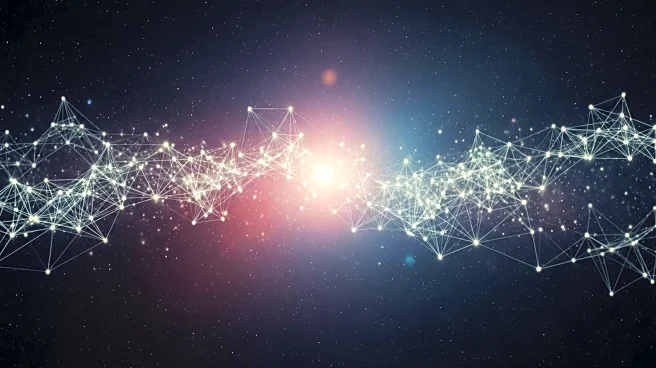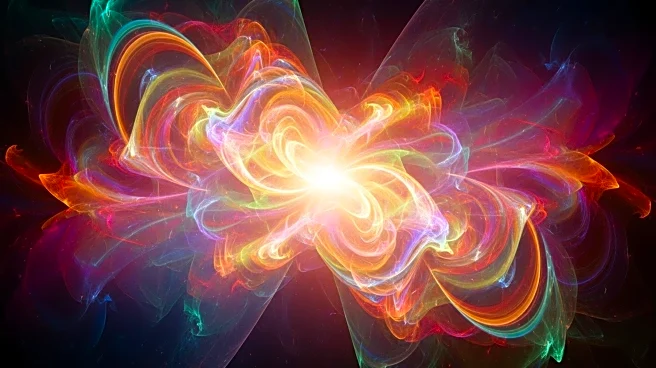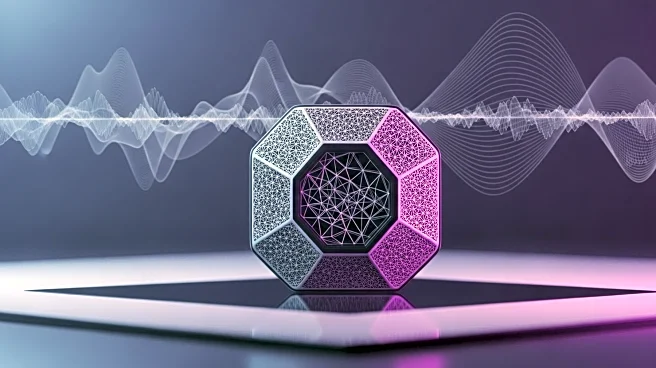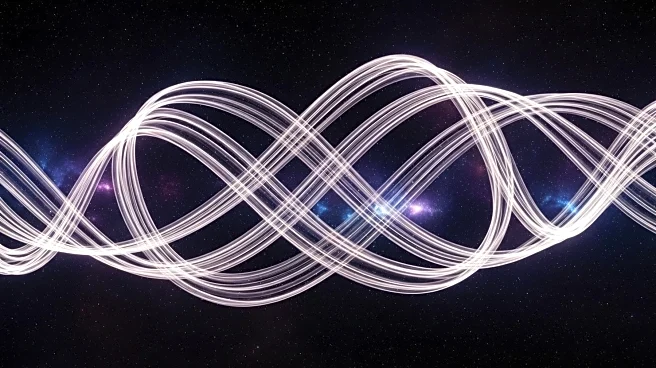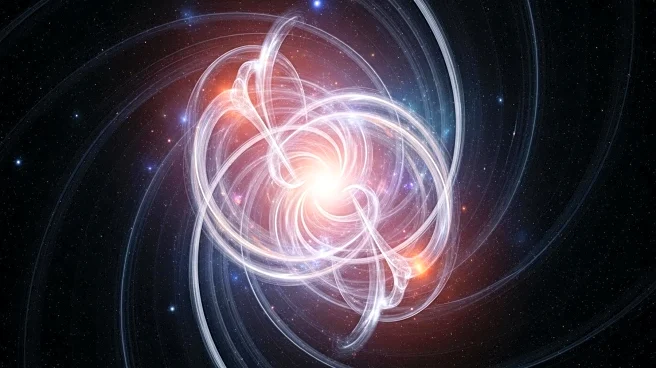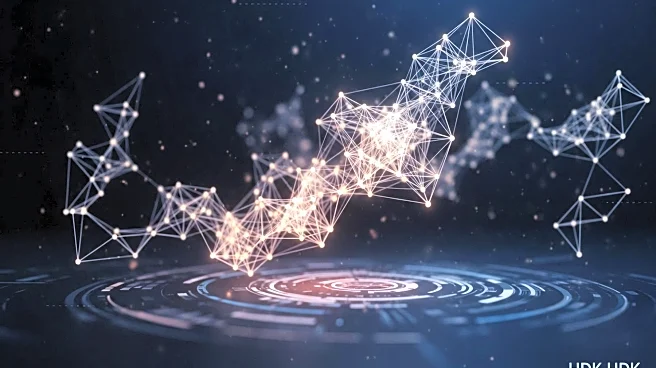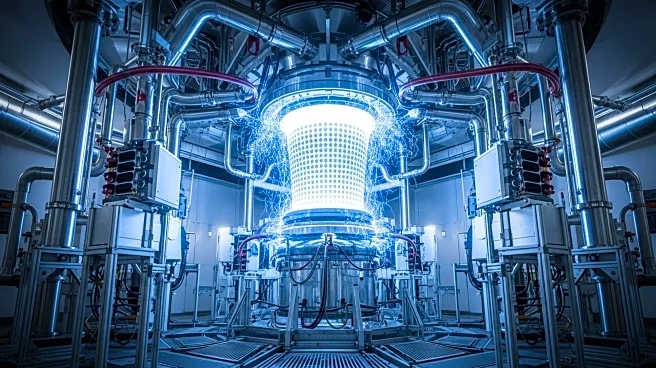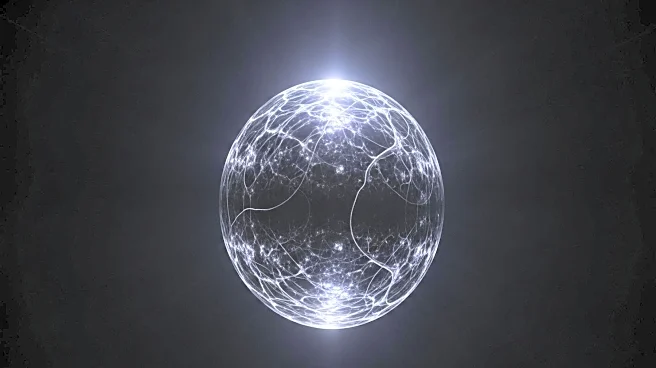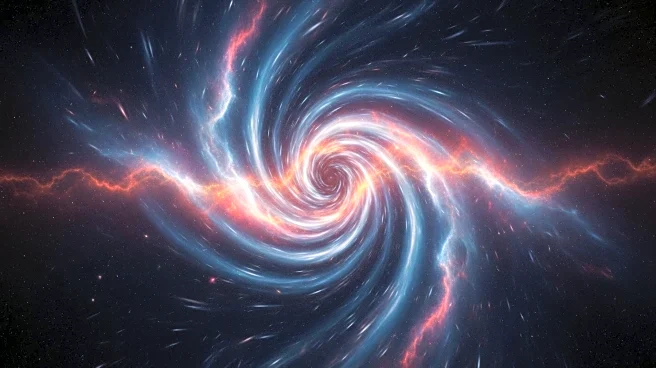What's Happening?
Researchers at Hiroshima University have developed a highly sensitive method to detect the Unruh effect, a phenomenon predicted at the intersection of relativity and quantum theory. This effect, which suggests that accelerating observers perceive vacuum fluctuations as real particles, has been difficult to verify due to the large accelerations required. The team proposes using circular motion in superconducting circuits to achieve detectable Unruh temperatures, potentially bridging gaps between general relativity and quantum mechanics.
Why It's Important?
The experimental verification of the Unruh effect could significantly advance fundamental physics by linking general relativity and quantum mechanics. This breakthrough may lead to new technologies in quantum sensing and deepen our understanding of spacetime. The research holds promise for future applications in advanced quantum technologies, potentially impacting industries reliant on precise measurements and quantum phenomena.
What's Next?
The researchers plan to analyze the decay processes of fluxon-antifluxon pairs, which could refine the experimental detection of the Unruh effect. This includes investigating macroscopic quantum tunneling, a phenomenon where particles pass through potential barriers. The ultimate goal is to explore connections between the Unruh effect and other quantum fields, contributing to the search for a unified theory of physical laws.
Beyond the Headlines
The detection method developed by Hiroshima University could pave the way for future applications in quantum sensing technologies. By understanding the Unruh effect, scientists may gain insights into the nature of spacetime and quantum reality, potentially leading to new theoretical frameworks in physics.

